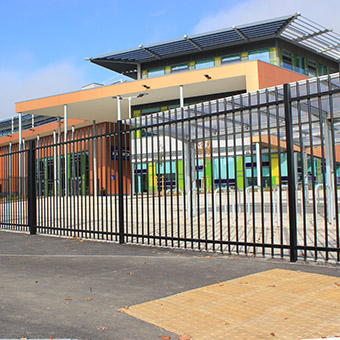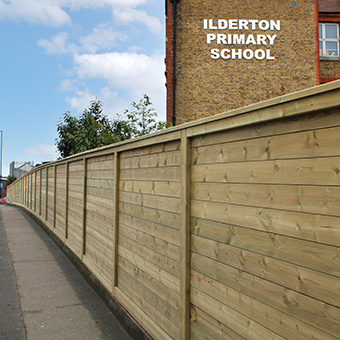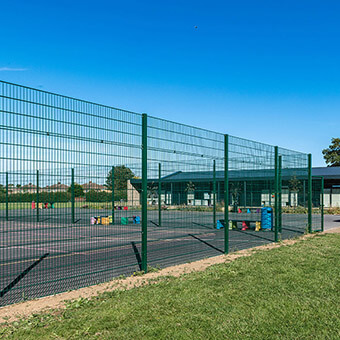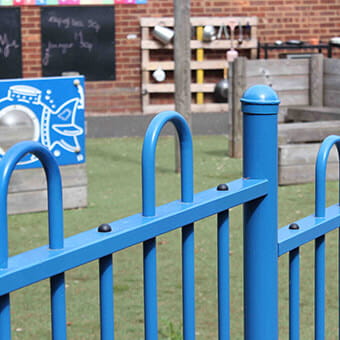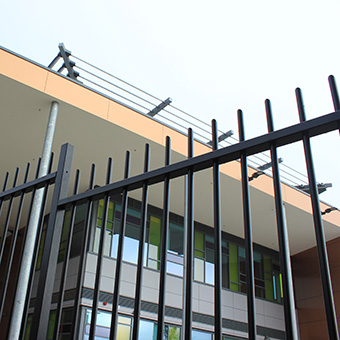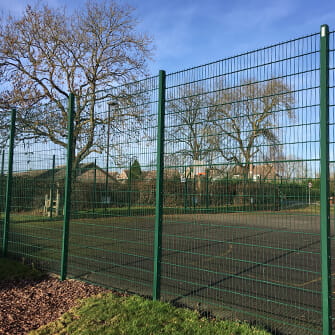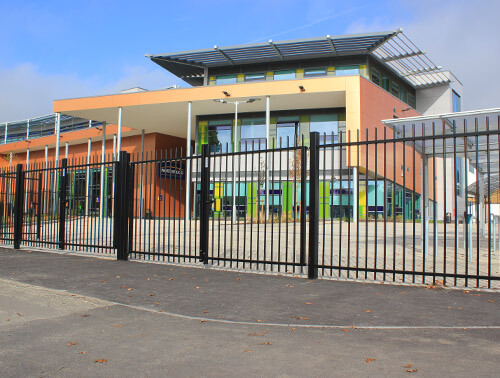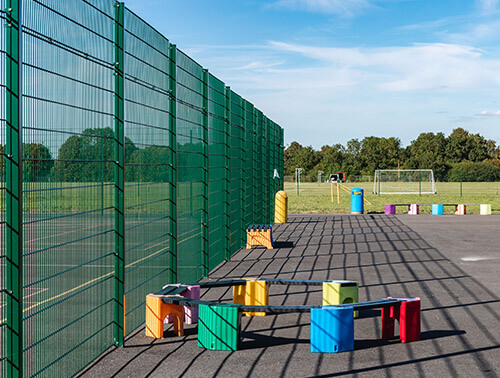Our other sites:
The Government guidance on school and college security is a good starting point when specifying physical security solutions, but as highlighted in the guidance, no two schools are the same, and the advice is fairly generic. In this blog post, we have expanded on the identified areas of physical security to offer some insight into suitable products and strategies, based on our years of experience and expertise manufacturing and installation comprehensive school solutions.
When specifying school fencing and security solutions for an educational establishment, consider the following points which have been taken from the guidelines.
In addition to this guide, you may want to set up a school security audit checklist. Below is our own template for checking physical security which you can use or build upon.
1.1 Perimeter:
A school’s perimeter is the first line of defence against the threats including trespassing, burglary, truancy, inappropriate interaction, and vandalism. In line with government guidelines, a 2 metre high secure fence such as metal railings, vertical bar fencing, or welded mesh panels should line the boundary of the school. Gates should be the same height as the fencing, be anti-climb, and fitted with anti-lift hinges. In addition, planting can increase deterrence, as long as it does not exceed 1 metre in height, with canopies at least 2 metres away from the ground to keep visibility high.
Our guidelines expand upon these points to outline best practice in the design of a school fence. A number of factors in addition to security are important when it comes to school perimeter fencing, including safety, aesthetics, noise reduction, and visibility vs privacy.
Security:In terms of security, there are many ways that Jacksons incorporates security features into its fencing to increase protection against vandalism, people climbing on the fence, and metal theft. Our vertical bar and metal railings are made with a welded pale-through-rail construction with no bolts that could be removed to swing pales aside, and panels secured to posts using concealed connectors. Our welded mesh panels also feature anti-vandal connectors, with tamper-proof fixings on the secure side. Protection against climbing is important to consider, especially when fencing is attached to walls which are a common historic boundary indicator in many schools. Ensure the fence on top is flush with the wall on the outside to prevent a step being left for climbing.
Safety:Any railings must conform to building regulations for anti-trap, to ensure children cannot get their heads, necks and limbs stuck. If a timber fence is installed, it should ideally incorporate smooth planed boards to reduce the risk of splinters and knots which can be a finger-trap hazard. If the fence is made of steel, a galvanised finish will prevent rust and corrosion, removing the risk of sharp edges. The design of the fence should be absent from spikes at a low height. In schools with vulnerable children or where they are likely to be in close proximity to the fence, choosing a fence with rounded elements can increase protection against injuries.
Aesthetics:Consider the look of the fence; it is the first thing prospective students and parents will see when visiting, and when staff and children enter each day. The fence should incorporate a sense of welcome and wellbeing, and prevent creating a prison-like, hostile environment. Colour is an excellent way to improve the appearance of a metal fence, and can tie in with the school branding or even the surroundings. Security toppings should almost never be used around a school, except in extreme circumstances or in discreet areas. Where they are used, warning signs must be included.
Noise Reduction:Noise can disrupt students’ ability to concentrate and learn, and even negatively impact their health and wellbeing. At the same time, the noise that schools create from students walking between lessons, sports games, and playground activities can sometimes cause neighbour upsets. Acoustic barriers can help to alleviate the noise coming from both sides of the boundary, keeping relationships amicable.
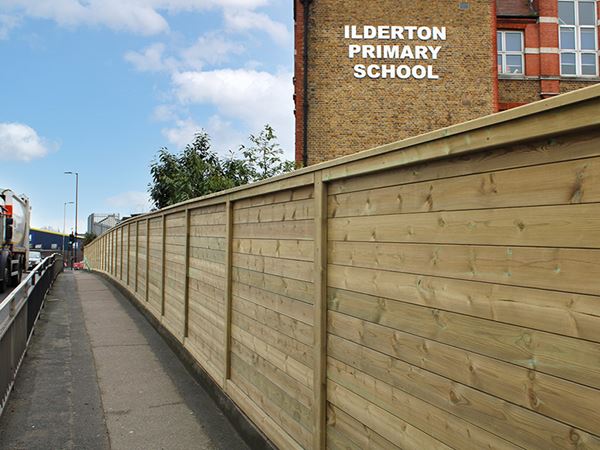
A careful balance must be struck between enabling visibility from the school to the outside, in order to know who is passing by and prevent anything sinister, while also protecting students from interacting with members of the public or objects being passed through. This is where it is essential to know the layout of the school and which areas are used for activities before specifying. Generally, a fence that enables privacy around the playground, and visibility around the perimeter and entrance is a good rule of thumb. To keep students away from the fence (and from the public), a stand-off fence next to grass verges can help to ensure they stick to the path directly outside of buildings.
As the government guidelines state, no two schools are the same. In particular, inner-city schools can be tricky as they will often use all available outdoor space for activities including playtime and sports, and will usually have a much smaller footprint around the entrance, due to not having the luxury of a lot of space. One school in London combatted this by installing a fence with good concealment around almost the entire perimeter, with a small section of high visibility mesh around the school office and entrance for surveillance.
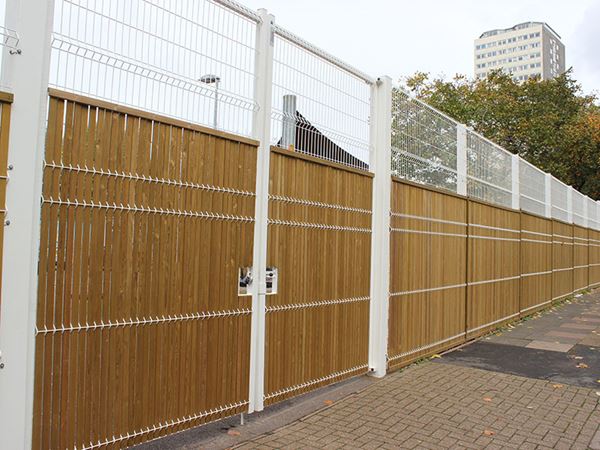
The choice of fence depends on other factors including the risks faced by the particular school, which can depend on the location, crime rate in the area, and the type of school it is (public, private, additional needs).
1.2 Main site entrances:
Government guidelines on main site entrances cover what we have mentioned in the perimeter section about privacy and visibility. It also states that secondary access points should be kept locked and only opened for deliveries and other specific needs.
When it comes to specifying gates, they should be of the same construction as the fencing. If gates are automated, safety is of the utmost priority, followed closely by reliability. Gate kits that can be bought online to attach to existing gates are not suitable, especially in areas with children as they are unaware of the dangers. In addition, they are often installed without safety devices, which is dangerous and will almost certainly lead to accidents. All of our gate automation engineers are trained to a minimum of DHF level 2.
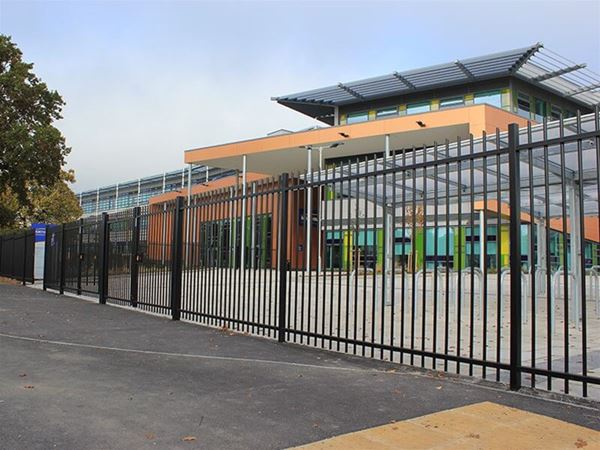
1.4 Car parking areas and 1.10 Access control:
In addition to the advice that they should be well lit and have good natural surveillance, safety is a key consideration for car parks in order to protect pedestrians from traffic. Separate entrances for vehicle and pedestrians should be specified, with access control and demarcation such as bollards or knee rail fencing between pathways to enforce segregation. An additional line of fencing may also be necessary, to provide extra security. Consider how the car park will be accessed by whoever uses it – presumably staff. If the car park is already protected by the main gates and perimeter, a traffic arm barrier will usually suffice, and can be paired with a range of devices such as swipe cards and keypads. Alternatively, a manual barrier such as a warden barrier is a simple and effective way to keep other vehicles from using the car park.
1.6 Alarm systems:
The guide includes details about internal alarms, but external alarms on fences can also be considered in high risk locations, or areas of the site that need extra security. Perimeter Intrusion Detection Systems (PIDS) are discreet electronic devices that remotely alert a monitor of attempts to cut or climb the fence.
1.7 IT suites and 1.9 IT equipment:
The use of security compounds and additional gates outside doors to IT suites is common practice in businesses and is increasing in popularity for schools. In line with the guidance, we can provide security compounds with an LPS 1175 certification and Secured by Design rating. Compounds providing privacy, security and even noise reduction around air conditioning to stop vandalism and the potential for damage via overheating server rooms is a key priority. Going a step further, a ring of short height demarcation fencing around ground floor windows in line with CPTED surveillance principles, deters and even denies access through unauthorised routes.
1.8 Property security:
As well as the recommended internal storage plan for musical instruments, cameras, and other valuable items, external storage compounds are ideal for bins, and sports and maintenance equipment. A fencing solution that doesn’t allow a view through like EuroGuard Combi can help keep items hidden and prevent them being a target for theft.
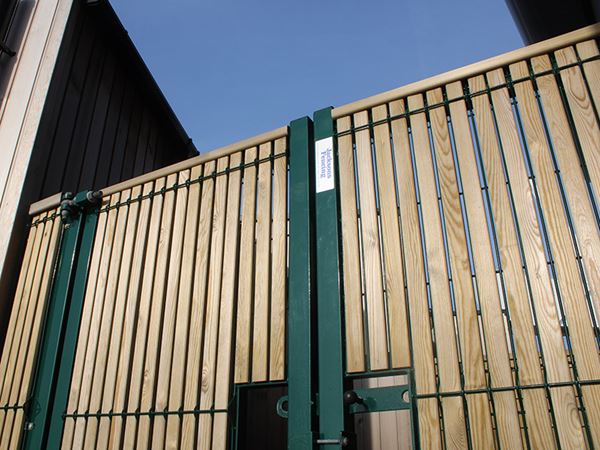
Read more school advice in our other blog posts:
Related Products
We have completed over 5000 education projects in the last ten years and have a huge range of school fencing and gates, all guaranteed for 25 years. Browse individual products or view the full range below.
School FencingRelated Content
Top
